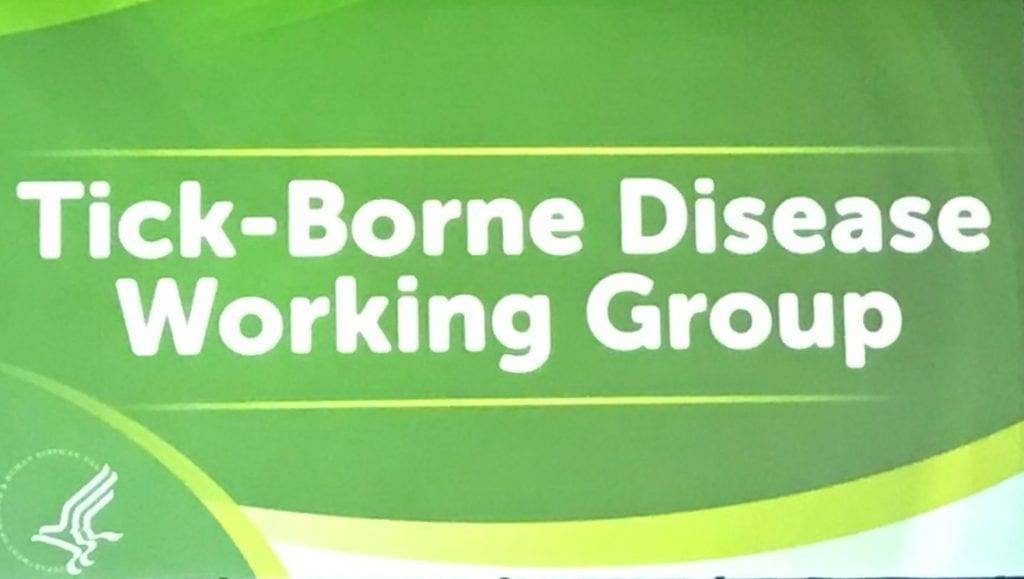FACA rules and the Tick-Borne Disease Working Group

Questions have been raised in the Lyme community about the Tick-Borne Disease Working Group and its compliance with assorted regulations, especially related to what is called FACA. Here is some information to help you put the discussion in context.
FACA stands for Federal Advisory Committee Act, which governs the establishment and operation of advisory committees.
It is implemented by the General Services Administration (GSA), which has issued regulations and guidance. An overview of FACA can be found here.
The purpose of FACA is to ensure that the public has knowledge of and an opportunity to participate in meetings between Federal agencies and groups that the agency either has established, or manages and controls for the purpose of obtaining group advice and recommendations regarding the agency’s operations or activities.
The Tick-Borne Disease Working Group, established by the 21st Century Cures Act, falls under FACA rules.
The following questions and answers have been posted the HHS website:
When are the Tick-Borne Disease Working Group’s records made available to the public?
The Tick-Borne Disease Working Group (“Working Group”) records are available to the public during the public meetings. Providing “contemporaneous availability” of those records is designed to “provide a meaningful opportunity [for the public] to comprehend fully the work undertaken by the advisory committee.” See GSA Federal Advisory Committee Management Final Rule, 41 C.F.R. § 102–3.170 and FACA § 10(b).
The Working Group will make those records available to the public in two ways. First, some of those records are available on the Working Group’s website during the public meeting. Second, when records are not available on the website during the meeting, the Working Group will make paper copies of those records available at the public meeting. Furthermore, as required by the Federal Advisory Committee Act (FACA), paper copies of records, which were made available to or prepared for or by the Working Group are available for public inspection and copying at: https://www.hhs.gov/ash/advisory-committees/tickbornedisease/index.html or at the offices of the Working Group.
How are public comments shared with the members of the Tick-Borne Disease Working Group and the public?
The public’s comments are important to the Tick-Borne Disease Working Group and those public comments are shared with the members of the Working Group.
The way those comments are shared with the Working Group depends on how those comments are submitted.
Verbal public comments: If a verbal public comment is provided to the Working Group during one of its public meetings, then the Working Group has the opportunity to listen to and consider that comment during the meeting. A transcript of those verbal public comments are also subsequently made available to the public on the Working Group’s website.
Written public comments: Written public comments can be submitted to tickbornedisease@hhs.gov. Those comments that relate to the substantive business upon which the Working Group provides advice and recommendations under the 21st Century Cures Act are posted to the Working Group’s website. The members of the Working Group are informed where those written public comments are posted on the Working Group’s website, so that they can review and consider those comments.
Although the FACA does not require that Federal Advisory Committees post public comments online, the written public comments related to the substantive business of the Working Group will be posted online in an effort to increase transparency.
The Tick-Borne Disease Working Group greatly appreciates the time and effort that the public has devoted to sharing their comments and insights on this important topic.
How does the FACA affect subcommittees?
The subcommittees of the Tick-Borne Disease Working Group are not required to follow the transparency requirements of the FACA, because they are doing preparatory work for the Working Group and the final products of that preparatory work will be vetted by the Working Group at a public meeting.
Federal advisory committees are treated differently than subcommittees under FACA for two reasons. First, in general, the requirements of FACA “do not apply to subcommittees of advisory committees that report to a parent advisory committee and not directly to a Federal officer or agency.” See 41 C.F.R. § 102–3.35.
Second, the subcommittees of the Tick-Borne Disease Working Group are performing “preparatory work” and the FACA transparency requirements do not apply to preparatory work. See GSA Federal Advisory Committee Management Final Rule § 102–3.160(a). Preparatory work is defined as “[m]eetings of two or more advisory committee or subcommittee members convened solely to gather information, conduct research, or analyze relevant issues and facts in preparation for a meeting of the advisory committee, or to draft position papers for deliberation by the advisory committee.” See 41 C.F.R. at § 102–3.160(a).
How will the final products of the subcommittees’ preparatory work be made available to the public?
The final products of the preparatory work conducted by the subcommittees of the Tick-Borne Disease Working Group will be vetted at public meetings of that Working Group and will be made “available for public inspection and copying” under FACA § 10(b). The Working Group will make those final products available on the Working Group’s website.
The final products of the six current subcommittees are now available on the Working Group’s website on the Reports page and the Meeting page for the May 10, 2018 meeting.
Links
FACA
https://www.gsa.gov/cdnstatic/FACA-Statute-2013.pdf – PDF
Federal Advisory Committee Management Final Rule, 41 C.F.R. Parts 101-6 and 102-3
https://www.gsa.gov/cdnstatic/FACAFinalRule_R2E-cNZ_0Z5RDZ-i34K-pR.pdf – PDF




















We invite you to comment on our Facebook page.
Visit LymeDisease.org Facebook Page